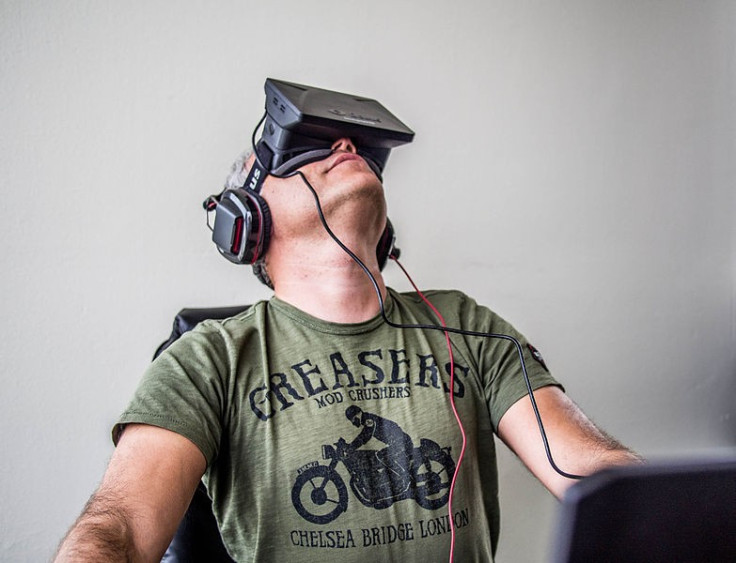Oculus Rift, Omni, CastAR - 2014 is the Year of Virtual Reality Gaming

Since the days of Morton Heilig's Sensorama, man has dreamed of decent virtual reality equipment. We've fantasised about walking through magical other worlds or watching the galaxy fly past from the cockpit of a spaceship.
Virtual reality and augmented reality technology has been on the tip of the gaming industry's tongue for decades now, but unfortunately, for a long time, the closest we got was the Victormaxx Cybermaxx, which even from the box you could tell was crap.
2014 however might be the year that all changes, the year when commercial VR and AR technology finally becomes sophisticated and affordable. You've likely heard of the Rift, a pioneering virtual reality headset being developed by Californian company OculusVR. It's already in the hands of game developers who, as IBTimes UK discovered first hand, are doing great things with it, and a consumer model is expected to launch later this year.
But the Rift isn't the only VR or AR device set to hit the market in the near future. There's also the Omni, a virtual reality "treadmill" that allows players to control in-game running by physically running in the real world, and the CastAR glasses, which project digital images onto a reflective surface allowing viewers to move around them and view them in three dimensions.
This could be the year virtual reality finally takes off.
The way we connect to the virtual world is very limited with keyboards, mice and hand-held gamepads
But there's still a long way to go between the prototypes that have been unveiled so far and VR going mainstream. The technology needs to be affordable and easy to use, not just for consumers but developers as well. And then there's the challenge of drawing players away from their mice, keyboards and control-pads; with people accustomed to interacting with games the way they do, will VR devices see mainstream adoption or will they quickly fizzle out like motion controls?
Jan Goetgeluk, founder of Virtuix, makers of the Omni treadmill, believes VR devices could one day replace current gaming controllers:
"The way we connect to the virtual world is very limited with keyboards, mice and hand-held gamepads. Virtual reality gives scale to video games. When you approach a giant that stands hundreds of feet tall, that scale is difficult to realise on a flat panel display and using a controller to walk towards it. When you have to look up to see the top of the giant and walk around it yourself that is an incredible experience.
"Gamepads are a crutch. The combination of headsets, motion sensing controllers and platforms may make them obsolete."
Overnight revolution?

Jamin Smith of Born Ready Games, which integrated the Oculus Rift into its space dogfight sim Strike Suit Zero, says the revolution won't happen overnight:
"It'll take a little while to permeate the mainstream. There needs to be a good base of mainstream-friendly games to attract the demographic first.
"Once bulky headsets are removed from the equation, VR will be that much more accessible. One day, VR will be the only way we play games, and we'll look back at early videos of people using the bulky old Oculus Rift and laugh."
Rick Johnson, co-creator of the CastAR glasses, is a little more cautious.
"As with any new technology, the adoption of VR will be slow at first, but it will pick up significantly in the next few years.
"However, every input device has its own benefits and negatives towards specific uses and cases. For the same reasons that touch pads haven't replaced joysticks, motion sensitive controls and VR won't replace them either. Input schemes complement the space entirely and only expand upon helping to create new and exciting genres of gameplay."
Drive prices up
As with all new gaming tech, developer friendliness is the main concern. It affects everything. If the headsets are too hard to integrate into games, they'll never penetrate the market. Even if they're just difficult to work with in fact, it'll have a knock-on effect on consumers. Brendan Iribe, CEO of OculusVR, recently speculated that the extra work developers will have to put in to integrating VR tech could drive videogame prices up.

Virtuix and Technical Illusions are both working to make their devices as accessible as possible.
"We're developing an SDK (software development kit) for developers and we've already started coordinating with studios," says Goetgeluk. "For consumers, the Omni is compatible with any PC game right out of the box. As long as the game uses the keyboard for movement, the Omni can be used. We have demonstration videos of us playing Minecraft, Call of Duty, Battlefield, Team Fortress 2 and more."
Johnson adds that CastAR will be "offering a low level SDK as well as high level SDKs. The low level SDK is designed for people who have a custom game engine or other application that need access to the tracking data or other input devices we offer. For those people who use Unity, a free game development tool, we have a high level SDK that allows you to get up and running quickly with CastAR. For example, the sample game which ships with Unity, Angry Bots, takes about three minutes to get converted."
Challenges
Transitioning from the traditional videogame environment to a 3D world presented some unique challenges for the Rift team Smith says: "Though it certainly wasn't an issue to get the Oculus version up and running, it wasn't working well originally, so we then had the challenge of fixing all the issues the transition to VR brought with it.
I certainly don't think it's gimmicky - VR is the real next-gen, in my eyes
"The biggest challenge we had was ensuring that the UI was functional in the Rift. For a time, it was very difficult to read and meant that the player couldn't get the necessary information from the game. I certainly don't think it's gimmicky - VR is the real next-gen, in my eyes - but it'll take a little while to iterate to a stage that Joe Bloggs can pick it up and have fun with it.
"In an ideal world, it'd be nice to build a game from the ground up for the Rift but it might take a while before full games in this vein start to appear."
Hit its stride
Naturally, there's a gold-rush mentality around VR right now. It's new and it's exciting – it's what people who play games have dreamed of ever since they saw Tron.
But despite the devices that are launching this year, there is still a way to go. Virtual reality won't hit it stride until games are being made especially for it. For that to start happening, there needs to be a quantifiable market of hardware adopters, as well as available, easy-to-use SDKs.
So to begin with, without bespoke software to support them, systems like the Omni and the Rift are going to be relying on wow factor to get going. Hopefully that'll be enough to attract an initial consumer base which the VR industry can then start to build on.
It might take a while, but from what we've seen and played so far, virtual reality is going to be worth the wait.
© Copyright IBTimes 2025. All rights reserved.






















